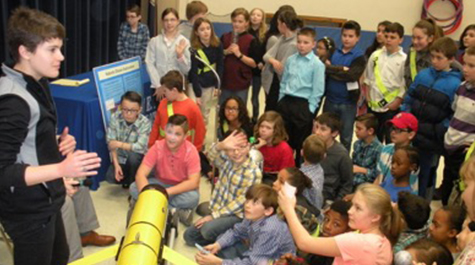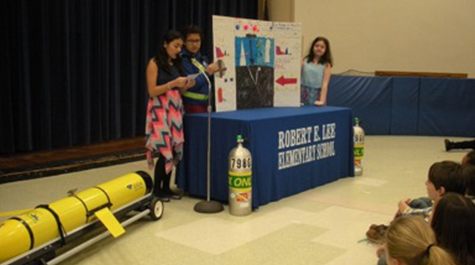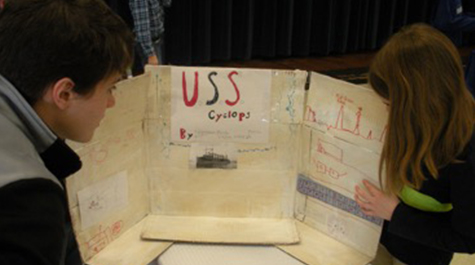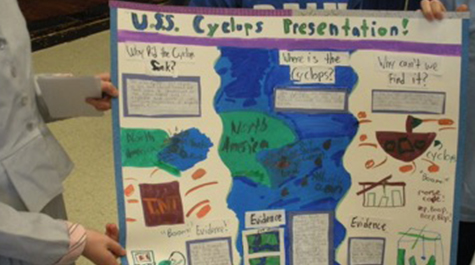VIMS partners with Ed School on vessel mystery
Researchers at the Virginia Institute of Marine Science recently partnered with William & Mary’s School of Education and students at Robert E. Lee Elementary in Spotsylvania to explore a nautical mystery.
The collaboration with fifth-grade teacher Kaitlyn Boyle was designed to challenge her 75 students with a real-world problem centered on the mystery of the USS Cyclops. The U.S. Naval vessel sunk without a trace in the Bermuda Triangle in 1918, along with her 306 crew and passengers. The ultimate cause of the ship's disappearance remains unknown.
Collaborating with the teacher and students were staff from the STEM Education Alliance at W&M’s School of Education as well as VIMS professor Donglai Gong. Gong directs the Coastal & Polar Physical Oceanography Laboratory at VIMS, affectionately known as C2PO in homage to Gong’s background in intergalactic studies.
Titled “The Search for the USS Cyclops,” the 9-week activity asked students to research and form theories based on three essential questions: (1) How did the USS Cyclops sink?, (2) Where is the Cyclops now?, and (3) Why has the vessel been so hard to locate? At the end of the project, groups of two to three students presented their theories and supporting evidence to a panel of scientific experts from the STEM Education Alliance and VIMS.
Greg Marsh, project specialist with the STEM Education Alliance, says “The students enjoyed taking control of their own learning and discussing their findings with professionals currently working on similar projects.”
The students conducted a variety of experiments to test their questions and obtain supporting evidence. These included developing a test that used food coloring to distinguish warm from cold water; illustrating surface currents with straws and glitter; building a clay model to illustrate depth zones in the ocean, including the Abyssal Plain; investigating fresh, brackish, and salt water in a density column; and using wavelength goggles to locate the visible light spectrum through water.
The experiments targeted several Virginia Standards of Learning (SOL) topics such as neap tides, tectonic plate movements, vertebrate and invertebrate predators, density of water, and ocean currents.
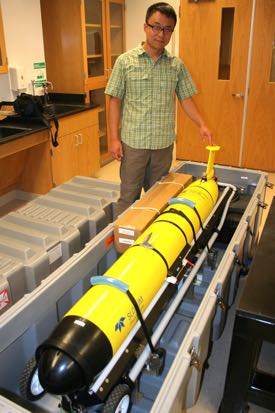
Marsh, project specialist at the STEM Education Alliance, helped connect the VIMS activities in ocean exploration and marine technology to the SOL objectives that were covered throughout the project.


